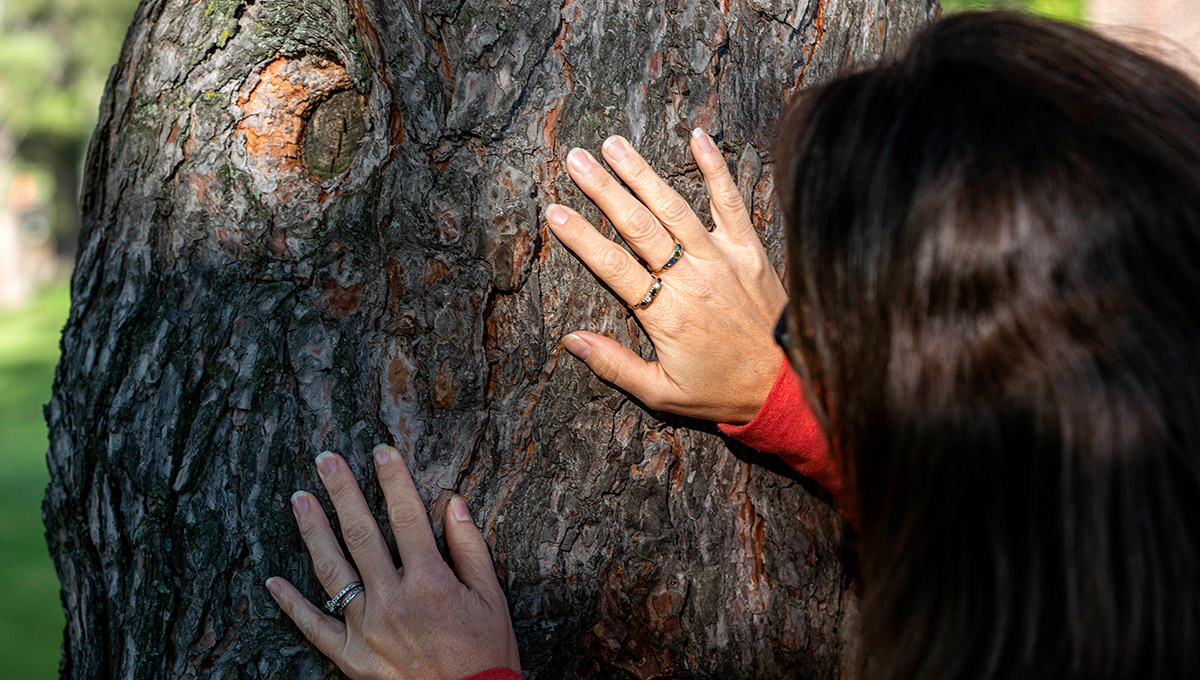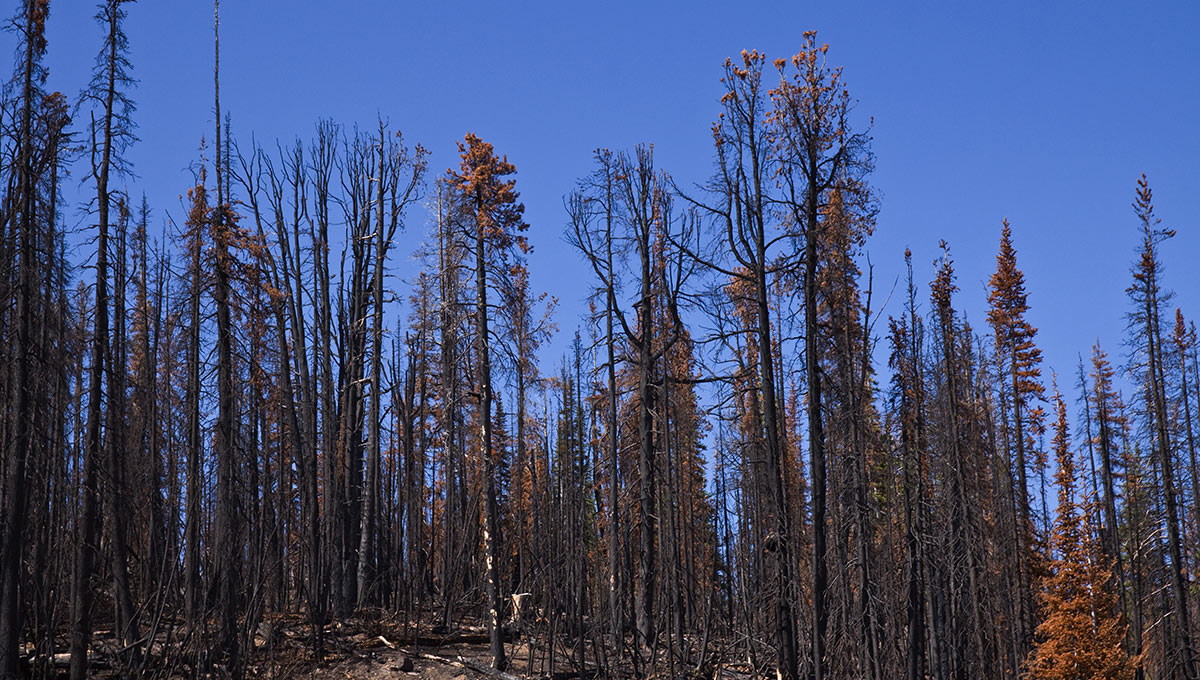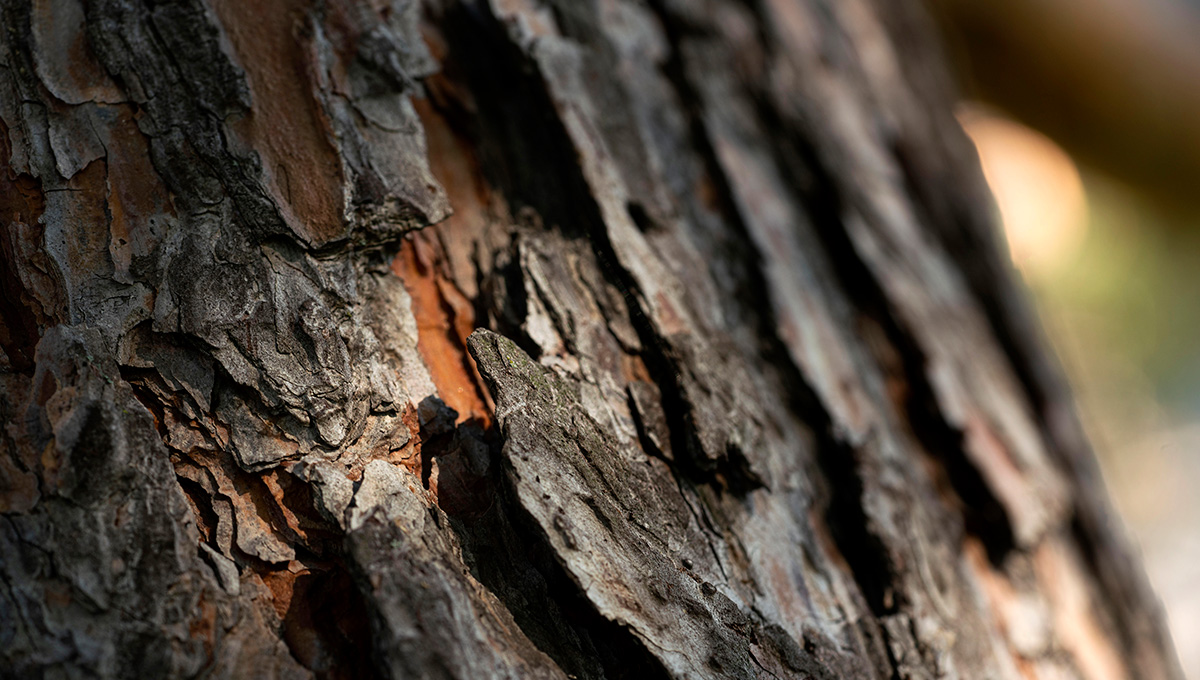By Dan Rubinstein
Photos by Chris Roussakis
A small insect is causing big problems in Canada’s western forests.
The mountain pine beetle (MPB) is about the size of a grain of rice and it’s common to find more than 100 of them on a mass-attacked tree. Foresters first noted the beetle’s devastating impact on British Columbia’s lodgepole pine forests in the 1990s. A series of warm winters fuelled the outbreak, and the MPB soon spread east into Alberta, where it began to attack other species, including the jack pine, which is prevalent throughout the boreal forest that stretches all the way to the Atlantic.
Since then, the MPB has affected roughly 20 million hectares of trees—half of the total volume of commercial lodgepole pine in B.C.
Understanding why some populations of lodgepole pine have a genetic resilience to the pest and mitigating the risks faced by jack pine are the main goals of a new project co-led by Carleton Biology Prof. Catherine Cullingham. She recently received $6.4 million for research that will better inform policy makers and forest managers in government and industry—an interdisciplinary collaboration between pure science and social sciences with a team of Carleton colleagues: Vivian Nguyen, Stephan Schott and Heath MacMillan.
“We know how the mountain pine beetle behaves in B.C., but it’s in a novel environment in Alberta with a novel host,” says Cullingham, who is collaborating with University of Alberta Prof. Janice Cooke on this project, funded by Genome Canada, Genome Alberta, Ontario Genomics and Natural Resources Canada.
“There is a lot of uncertainty about what might happen next, which means it’s a good time to try to figure things out.”

Prof. Catherine Cullingham
Much has changed in the two or so decades since scientists began paying serious attention to the MPB. Most important, perhaps, is the tremendous leap forward in genome sequencing.
Cullingham, whose Genomics of Plants, Pathogens and Pests lab at Carleton uses methods from molecular biology, landscape ecology, population genetics/genomics and geographic information systems (GIS), says these advances have helped researchers gain a deeper understanding of both the pine hosts and MPB genetics.
Much like SARS-CoV-2, however, the MPB is evolving and could develop the ability to withstand Alberta’s colder winters. Moreover, the hot 2021 summer (and the potential for similar summers in the years ahead) could stress trees and make them more susceptible. Which makes the puzzle that Cullingham and her colleagues are attempting to piece together even more complex.

Warmer Winters Part of the Problem
At its core, the MPB outbreak is fairly simple. The forest pest is native to B.C. and part of the ecosystem, but because of warmer winters caused by climate change and management practices that produce a monoculture of trees at the same age—which are easier to harvest—the MPB has proliferated and spread.
How we respond involves not only considering the timber and jobs that forests provide but also the well-being they support and their “ecosystem services,” such as water and air purification and carbon sequestration.
“Our forests do so much for us,” says Cullingham, “that often gets neglected.”

Burnt pine forest in the Chilcotin, British Columbia, previously afflicted with pine beetle (iStockPhoto)
This past summer’s fires are another factor. The MPB doesn’t necessarily increase the probability of fire, but because the trees it kills are dry, outbreaks can lead to more intense fires, like those experienced in the Alberta communities of Fort McMurray and Slave Lake in recent years.
Fires are also, in part, a motivation for Cullingham. Major replanting campaigns will be starting in areas that burned and her research can help determine what to plant and where.
“A lot of this is timing,” she says.
“Our goal is not just to write papers. We want people to use our data to inform their decisions. The more info they have, the better decisions they can make.”

Looking for Genetic Variants in Healthy Trees
From the spread of rabies in raccoons in eastern North America to chronic wasting disease among deer in the prairies, Cullingham has approached problems with a population genetics perspective throughout her career—“bags of DNA” that she never finds boring.
To address the MPB outbreak, she’s hoping to discover why one tree can withstand the pest while another does not, looking both within one species and by comparing different species.
“We’re trying to find the genetic variants that the living trees have that the dead trees don’t,” she explains, likening the research to COVID-19 studies that are attempting to determine why some people have bad outcomes when infected by the virus while others don’t so we can better understand who’s at risk.
It’s important to look at risk and resilience among trees in the same project, says Cullingham, including the risk of a large outbreak among jack pine that could reach Ontario and Quebec. And it’s vital to use tools such as GIS, so if a genetic variant associated with resistance to the MPB is identified in lodgepole pine, for example, forest managers can be given maps and information in a form they can use.

The mountain pine beetle effect on trees in Jasper National Park (iStockPhoto)
In addition to all her time in the lab, Cullingham likes to see the trees and insects she’s studying firsthand.
The last time she was in Alberta’s Jasper National Park was about three years ago, not long before she moved to Ottawa from Edmonton to start working at Carleton. Mountainsides were red with dead trees.
“It gives you a sense of the gravity of the problem and makes your work feel validated,” says Cullingham.
“When you have a connection to a place and see how it’s impacted, you feel that.”

Monday, September 13, 2021 in Biology, Faculty of Science, Research
Share: Twitter, Facebook



